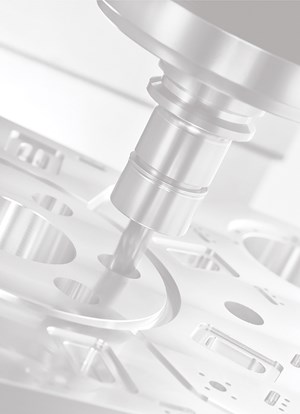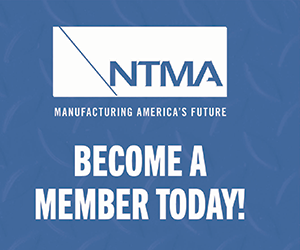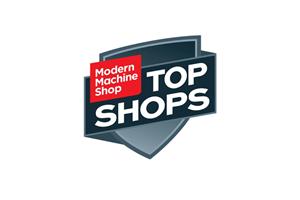Vertical Thinking: Strategies That Pay Off in Precision Manufacturing
How Marathon Precision’s mix of vertical integration, lights-out automation and cultural investment earned it a 2025 Top Shops Award for Business Strategies
Share



Mike Bauer’s grandfather was a blacksmith, and anvils are a running theme across the shop. (Bauer’s collection now tops 80 anvils.) The pharmacy sign is a nod to one of Bauer’s earliest jobs as a teenager. All photos by Modern Machine Shop.
When Modern Machine Shop selected Marathon Precision our 2025 Top Shops winner in the category of Business Strategies, it wasn’t because of any single technical capability or strategy. It was because of how the shop’s capabilities are tied together, and the series of deliberate choices that, if I’m being honest, at first didn’t look like strategy at all.
Earlier this year I had a chance to walk through Marathon’s 60,000-square-foot facility, where I found one of the most diverse arrays of metalworking production methods I’ve seen under one roof. Blacksmiths forging dies, machine operators prepping palletized CNCs to run lights-out, employees scanning complex parts with a Keyence system bought on short notice, EDM, and a chemical etching department that had just been recently updated
A few steps away? A full music recording studio, employees repairing cars, and massive vintage signs and metal sculptures everywhere.
Led by Mike Bauer, Marathon’s maverick founder and president, these details reveal a handful of strategies that explain why this Chicagoland shop is thriving in today’s volatile market. The team here has invested ahead of demand to create diversified production methods. It methodically built speed and accuracy into its quoting process and revamped its physical layout to improve workflow. And its shop culture encourages creativity and learning by giving broad access to shop tools and technologies.
Remove one or two of these strategies and Marathon Precision would look like dozens of other shops. But taken together, they explain why this truly unique shop earned its recognition as a 2025 Top Shop.
Diversity of Production Methods

A row of high-precision Sodick VMCs face off against a row of Sodick wire and sinker EDMs at Marathon Precision. After beginning as a tool-and-die shop, Mike Bauer invested much of his early profits in new CNC equipment, and today the shop boasts more than 50 CNC machine tools.
Technological depth is how Mike Bauer hedges against market unpredictability. Under one roof, his Wheeling, Illinois, shop runs multiple palletized Matsuuras, VMCs and HMCs, compact Brother five-axis machines, Mazak Integrex multitasking lathes, Sodick mills and EDMs (both wire and sinker), OD and surface grinding, waterjet and laser cutting, blacksmith forging, die hand-filing, conventional inspection equipment, and optical 3D scanning. A new chemical machining/etching department rounds out a diverse tech stack that allows his team to keep high-tolerance, high-value work in-house.
Mike Foy, lead production engineer, recounted the story of a recent job — a shaft assembly with flanges that required tolernaces of 0.0002 inchesand tight concentricity. But because the shop can perform honing, keying, turning, grinding and QC , the job was accepted and delivered on a timeline that would have been impossible if any single process had to be outsourced.
The benefits become clear through Marathon’s pipeline of work. While tariffs have created some unevenness across sectors, divergent streams of production work continually fill Marathon’s schedule because its capabilities are wide enough to catch them.
Invest Ahead of Demand

Marathon Precision runs multiple Matsuura VMCs and HMCs, as well as compact five-axis machines, Mazak Integrex multitasking lathes, and Sodick mills and EDMs.
For many shops, investing in new equipment is a reaction to backlogs of work. That strategy is reversed at Marathon, where investments help grow its backlog. Mike Bauer calls it “overbuying,” but it could just as easily be called vertical integration. Recent examples include:
Palletized horizontals and Verticals: Matsuura MAM VMCs and HMCs gave Marathon its first lights-out capabilities. Jobs that previously required weekend shifts now run through second and third shift unattended.
Compact five-axis: Adding compact Brother five-axis machines shifted small-part production away from the larger HMCs. This increased the changeover tempo and decreased energy costs, among other benefits.
New metrology technology: Marathon purchased a Keyence VL-700 optical 3D scanner — a considerable investment — after a single demo to win a complex aluminum parts program. This machine now serves as a mid-process verification tool across part families due to its ability to scan, overlay to CAD and create heat-map discrepancies.
When it comes to the brands that Bauer and his team trust, customer service is the top priority. This includes vendors who answer the phone, stock parts and can get a technician on-site quickly.
A Focus on Quoting and Workflow

A large Superman logo adorns the back wall of Marathon’s grinding department. The freedom for shop staff to create art and encouragement to work on their cars helps them develop skills across different trades.
Lead time and first-article quality is paramount for high-mix shops, so Marathon engineered its plant layout to support both. When the company moved into its current facility, the team redrew the plant floor in CAD and mapped the placement of equipment to optimize process flow. From saws to prep, machining, finishing, inspection and shipping processes, the goal was to reduce travel, centralize tooling and remove the handoffs between stations that added no value.
The shop augments its ERP system, JobBOSS2, with its own family libraries. Shafts are categorized by length/diameter; prismatic parts by work envelope and complexity; ground features by stock and wheel type. This allows the shop to base its quoting on known production rates and fine-tune them once the processes are dialed in. It may not be a fancy approach, but it is a disciplined one.
Likewise, on-time delivery and lead time are considered first among equals here. Revenue per employee is the most valued productivity KPI. More granular metrics are evaluated only if they improve pricing or routing processes. Rote reporting exercises are generally frowned upon at Marathon.
When it comes to QC, mid-process inspection has proven to be invaluable. The Keyence scanner lets machinists verify after op. 10 or op. 20 without waiting for a CMM program. Subtleties like countersink angles, fillets or blended surfaces are easily identifiable in the comparison heat map. Tolerances on the overlays can be tightened to probe when something looks off, then relaxed to clear a feature. Catching minor discrepancies before finish-machining saves time and keeps jobs on schedule. As Foy puts it: “Quoting is the hardest part. One bad part won’t kill you, but being off on 10,000 will. So we build accuracy into the front end and keep as much in-house as possible.”
Treat Culture as a Form of Capital

Inside Marathon Precision’s 60,000 square feet of production space you’ll find state-of-the-art CNC machines, vintage cars, forging stations, grinding operations, a professional music recording studio, chemical milling equipment and an array of sculptured art. This unusual mix is the brainchild of founder and owner Mike Bauer, seen here firing up his Batman sculpture.
You’ve heard businesses declare that “people are our greatest asset.” Marathon operationalizes this cliché into something meaningful.
After losing a close friend in 2015, Bauer decided that his shop would make room — literal and figurative — for employees’ personal needs and creativity. The result is visible throughout the shop: sculptures and artwork everywhere, a WWII bomber fuselage and a baby-blue ’55 Chevy mounted on the walls, a fully decked-out music recording studio, a back-room garage where staff can repair their cars on weekends. The materials for the shop’s artwork is mostly scrap. The only rules for using the shop’s tools for personal use are safety, respect and sharing what you’ve learned.
The freedom for shop staff to create art and the encouragement to work on their cars isn’t simply a matter of generosity. They’re also brilliant examples of skills development. An employee who fabricates a bracket for their car over the weekend will understand fixturing better on Monday. A blacksmith who forges a wedge will understand the relationship between stress and grain orientation in a way software can’t teach. Curiosity and skill creates a positive feedback loop.
Bauer’s behavior as a leader matches this environment. He walks the floor morning and evening to greet and say goodbye to staff. Persistent negativity isn’t allowed on the shop floor. All of this adds up to a culture that attracts people, retains them and keeps them learning.
Pairing Technology and People

While a machine tool could theoretically shape Marathon’s dies, Mike Bauer insists that no automated process can match the detail and strength offered by these hand-forging, as seen here by two of the shop’s three blacksmiths.
The combination of advanced equipment and cross-trained employees shows up not only in the variety of work at Marathon, but also in how the shop executes under pressure.
Back to the shaft assembly example — the job that landed on short notice with a tolerance callout of -0.0002 inches and concentricity held across nearly 40 inches. The work required turning, grinding, EDM keying and validation. But instead of outsourcing, the team, led by Marathon vice president Mike Bauer Jr., sequenced each step internally and ran the parts overnight. Owning the right equipment was obviously key, but having people confident enough to hand the job off between departments was just as important. In this case, finished parts were tagged and queued for shipment the next morning.
That same type of integration is shaping how the shop will operate in the future. Marathon is centralizing all tool preparation into a dedicated make-ready room for preset tools, shrink-fit, height setting and kitting, allowing each CNC program to arrive at the machine with a complete tooling package already staged. In addition, Bauer and Foy are evaluating investing in a CNC press brake in order to accept the fabricating requests they’re starting to see.
Not every experiment at Marathon has been a success. Large-part work, for instance, turned out to add more risk for injury and overhead than value. Choosing not to invest further in that technology was also a strategic decision.
Why This Strategy Adds Up to a Top Shop
Some of Marathon’s business strategies — vertical integration, investing before a backlog demands it, plant layout, constant attention to improving quoting processes — are explicit. Generosity, creativity, compassion are more expressions of character and leadership that turned out to be strategic.
Together they create a durable model for high-mix manufacturing, but not one that is easy to copy. It asks for a significant reinvestment of profit that many owners won’t stomach. It also involves a level of trust many managers won’t extend, as well as a tolerance for calculated risk. But the results are clear. Marathon Precision doesn’t have problems finding skilled employees, and their workload is diverse and steady. In a volatile market, the best strategy can sometimes look like personal conviction.
Related Content
Increasing Productivity with Digitalization and AI
Job shops are implementing automation and digitalization into workflows to eliminate set up time and increase repeatability in production.
Read MoreTop Shops 2024 Is Now Live
The Top Shops 2024 survey for the metalworking market is now live, alongside a new homepage collecting the stories of past Honorees.
Read MoreAnnouncing the 2025 Top Shops Honorees
This year’s honorees exemplify innovation, leadership, and operational excellence in the machining industry.
Read MoreLast Chance! 2025 Top Shops Benchmarking Survey Still Open Through April 30
Don’t miss out! Modern Machine Shop's Top Shops Benchmarking Survey is still open — but not for long. This is your last chance to a receive free, customized benchmarking report that includes actionable feedback across several shopfloor and business metrics.
Read MoreRead Next
Marathon Precision’s Engineering Playground: One Shop’s Secret to Sustaining High Tech, Low-Volume and High Morale
Half an airplane on the wall, a ten-foot metal dragon, and a full-blown recording studio might not scream “manufacturing efficiency,” yet Marathon Precision proves otherwise. Here’s how forging, complex CNC operations and staff-driven creative projects combine to fuel the shop’s productivity and profitability.
Read MoreOEM Tour Video: Lean Manufacturing for Measurement and Metrology
How can a facility that requires manual work for some long-standing parts be made more efficient? Join us as we look inside The L. S. Starrett Company’s headquarters in Athol, Massachusetts, and see how this long-established OEM is updating its processes.
Read More




























